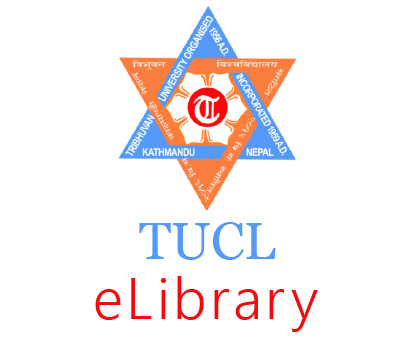Please use this identifier to cite or link to this item:
https://elibrary.tucl.edu.np/handle/123456789/12602Full metadata record
| DC Field | Value | Language |
|---|---|---|
| dc.contributor.author | Sharma, Sita | - |
| dc.date.accessioned | 2022-08-25T05:55:21Z | - |
| dc.date.available | 2022-08-25T05:55:21Z | - |
| dc.date.issued | 2011 | - |
| dc.identifier.uri | https://elibrary.tucl.edu.np/handle/123456789/12602 | - |
| dc.description.abstract | This study deals with "Fertility Behaviour of Magar Community: A Case Study of Dhurkot VDC, Nawalparasi." To complete this study primary and secondary data are collected. The analysis and interpretation of data are carried outby frequency and cross tabulation. This study is mainly based on the consideration that fertility is determined by different socio-economic and demographic variables.Only 125 respondents of MagarCommunity in Dhurkot VDC are taken to examine the relation of fertility with socio-economic and some demographic variables. The specific objectives of this analysis are socio-economic and demographic characteristics of ever married women of aged (15-49) to assess the relationship between fertility and specific socio-economic variables as education, occupation,income and land holding size and also to study the relation with fertility (CEB) andsome demographic variables like to age at marriage, child less experience andknowledge, child less experience and knowledge of family planning methods. Among the total sample population 394 (58.38 %) are males and female are(49.61%). Out of the total population of both sexes of aged 6 years and above the literacy rate is accounted 67.8 percent and the rest 33.2 percent are illiterate. Most of the respondents found to be engaged in households chores and agriculture and same condition in sampled households. Majority of the respondents married before theyreached 20 years. Which bring the high fertility. More than 84.8 percent of the respondents heard about family planning method through radio. The mean number of CEB is found to be3.5 in Magar community.The number of CEB is found in in creasing order with increasing aged of women within( 40-44)age group have highest mean CEB of 6.0 per women. | en_US |
| dc.language.iso | en_US | en_US |
| dc.publisher | Department of Population Studies | en_US |
| dc.subject | Fertility Behaviour | en_US |
| dc.subject | Magar community | en_US |
| dc.title | Fertility Behaviour of Magar community (A Case Study of Dhurkot VDC,Nawalparasi , District) | en_US |
| dc.type | Thesis | en_US |
| local.institute.title | Central Department of Population Studies | en_US |
| local.academic.level | Masters | en_US |
| Appears in Collections: | Population Studies | |
Files in This Item:
| File | Description | Size | Format | |
|---|---|---|---|---|
| Cover(1).pdf | 35.08 kB | Adobe PDF | View/Open | |
| Chapter.pdf | 349.77 kB | Adobe PDF | View/Open |
Items in DSpace are protected by copyright, with all rights reserved, unless otherwise indicated.
